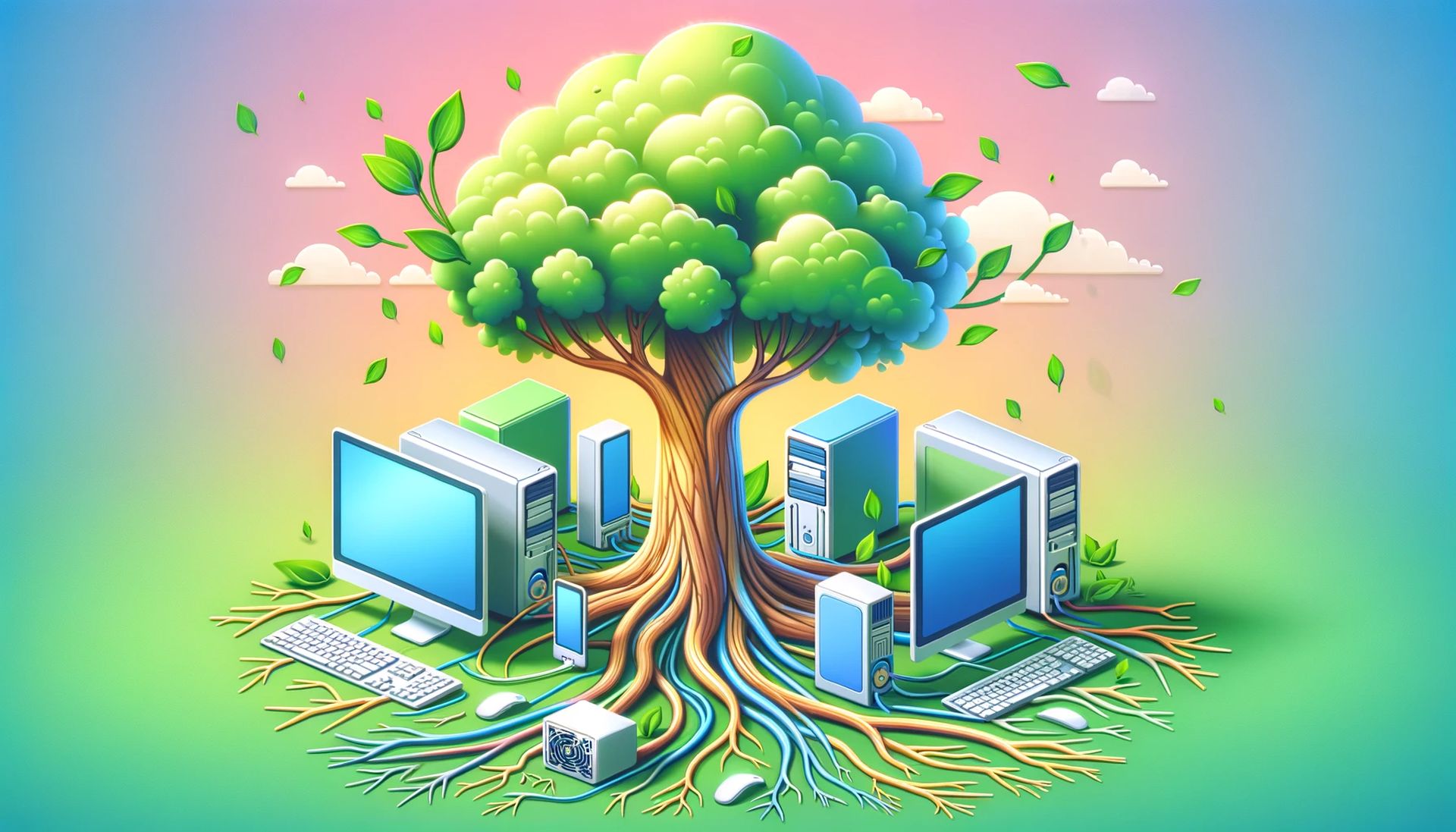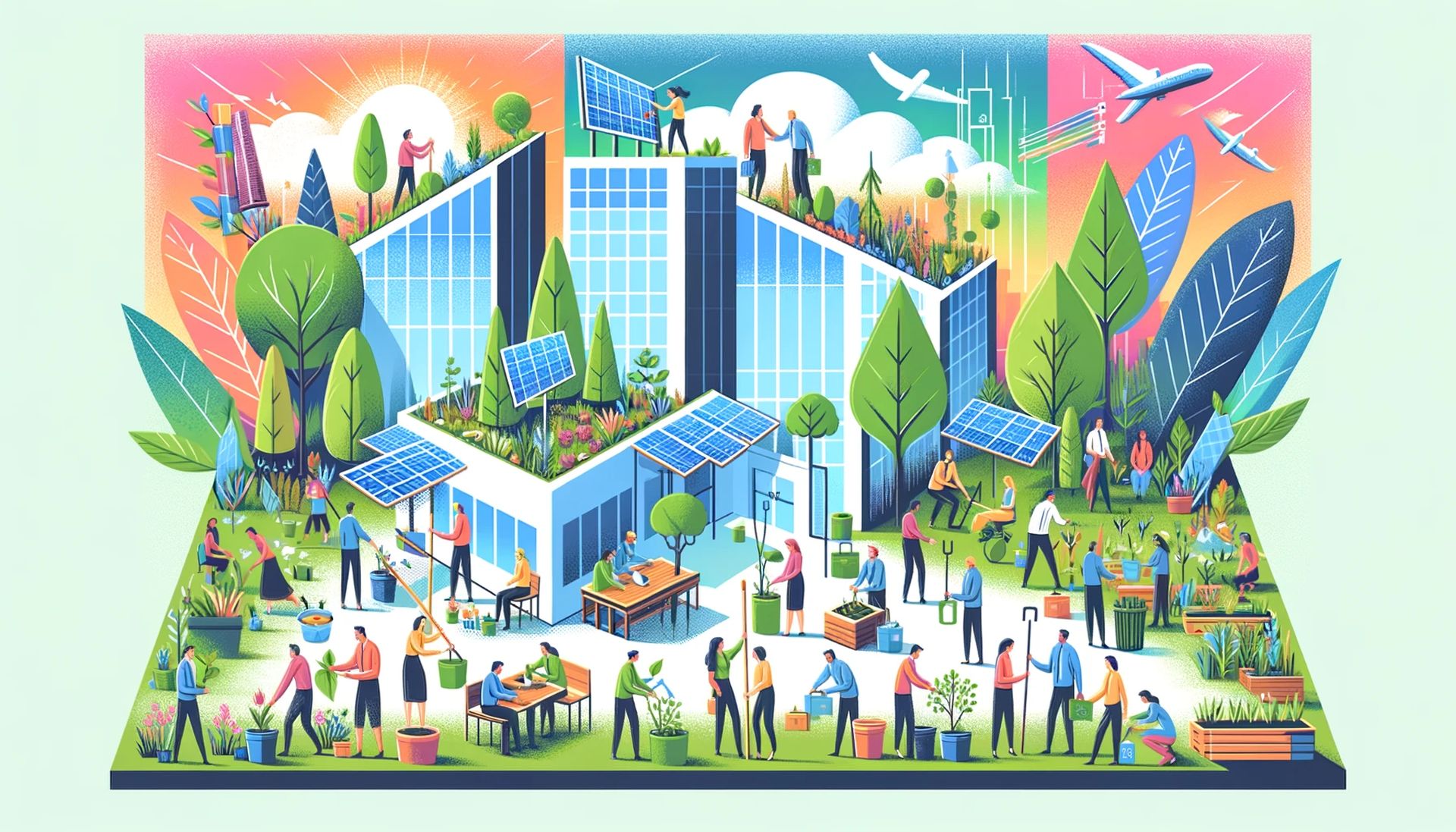Profiting through green technologies
Sustainable technology stands as a digital framework designed to enhance ESG (environmental, social, and governance) results, offering a path to maximize its benefits.

27 Kas 2023
3 dk okuma süresi
Sustainable technology stands as a digital framework designed to enhance ESG (environmental, social, and governance) results, offering a path to maximize its benefits.
Gartner's projection indicates that by 2027, a quarter of CIOs' earnings will be directly tied to the impact of their sustainable technology initiatives. However, the common practice of confining sustainability to just the world of internal IT operations (ITOps), or "sustainable IT," is a limited perspective.
A broader view encompasses the use of technology to foster a range of sustainable outcomes. This concept of sustainable technology is not only operationally crucial for cost optimization, energy efficiency, and asset management but also pivotal for achieving ESG goals such as wellness enhancement and ensuring responsible corporate conduct. Beyond operational benefits, sustainable technology is instrumental in introducing new business models and developing technologies that more effectively meet customer needs.
4 dimensions of sustainable ITOps
When we envision sustainable technology, it extends its roots across four key dimensions within an organization: eco-efficient IT management, organizational ecosystems, client-centric operations, and supplier and partner synergy.
Let's begin by redefining internal IT operations.

Eco-efficient IT management
This domain is about judiciously choosing and utilizing tools, hardware, and partners to optimize output while conserving resources. Objectives in eco-efficient IT management include slashing indirect Scope 2 and Scope 3 GHG emissions — those tied to IT electricity usage and emissions from activities not directly overseen by the company, like the carbon footprint of retired IT assets. It's also about sharpening the focus on vital areas such as human rights, ethical resource procurement, and the transparency of the supply chain.
Potential strategies encompass advancing to agile and more energy-effective power management in data centers, employing pre-deployed power distribution features, or leveraging DCIM software to meticulously manage, measure, and maintain data center operations.
The fruits of these efforts are manifold, introducing innovative models and services for IT provisioning. For instance, consumption-based pricing models correlate expenses directly with resource use, thereby impacting sustainability measures such as diminishing carbon footprints and electronic waste.
Organizational ecosystems
Sustainable technology underpins the transparent orchestration of sourcing and trading activities within enterprise operations, ensuring energy and material efficiency, minimizing emissions, and promoting equitable labor practices. These operations are crucial for the organization in maintaining efficiency and manifesting its commitment to ethical and sustainable growth.
This point of view involves leveraging technology to foster ESG goals throughout the business's operational fabric. Automation plays a key role in reducing the need for resource-heavy tasks, while artificial intelligence and natural language processing are harnessed to anticipate and strategize for the business implications of climate change. Moreover, advanced analytics emerged as a pivotal tool for obtaining real-time insights into performance metrics, fostering a culture of continuous improvement and responsiveness to sustainability objectives.
The cloud is another transformative element, reshaping processes to be more sustainable and facilitating remote work, which in turn reduces the organization's carbon footprint. It's not just about moving to the cloud but how the cloud can be used to reinvent processes for maximum sustainability impact.

Client-centric operations
Regarding customer operations, sustainable technology serves as a catalyst for delivering products and services that meet and enhance customers' sustainability objectives. This aspect of operations requires a deep dive into the customer's world, grasping their primary sustainability concerns while negotiating the delicate balance between their often-competing interests.
Customers today are increasingly looking for sustainability in the products they buy and the services they use, yet they may not be ready to make concessions on quality or price. Navigating these waters calls for a strategic approach where sustainability is embedded in product quality and cost-effectiveness, not merely an afterthought. Transparency is key—customers should be able to clearly understand how their interactions with a company's offerings contribute to a greener future.
The goal is to make sustainability an intrinsic, seamless part of the customer experience. By doing so, businesses can support their customers' green initiatives, strengthening customer loyalty and fostering a shared commitment to environmental stewardship.
Supplier and partner synergy
This dimension emphasizes the sustainability practices extended through a company's supply chain and collaborative networks. It's about ensuring that partners and suppliers align with the company's sustainability values and practices, amplifying its ESG impact through its extended enterprise. This includes nurturing a supply chain that champions renewable practices and ethical sourcing, creating a ripple effect of sustainability that transcends the immediate organization.
İlgili Postlar
Technical Support
444 5 INV
444 5 468
info@innova.com.tr









